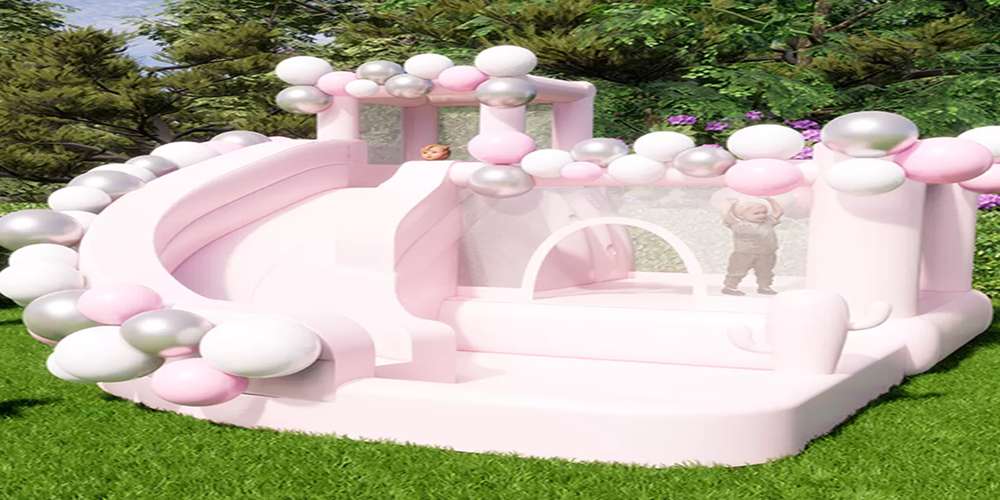Even though you have the best bounce house, you still need to maintain it properly to extend its lifespan. The routine for care and upkeep is not particularly complex. Using common sense can enable your investment to pay off for a longer period. Every owner or tenant of a bounce house should adhere to the simple care and upkeep measures listed below:
- You must wash it after each use.
- Patchwork and maintenance are quite important.
- Recognize that the bounce house will sustain damage when used, so make sure to patch it as soon as possible.
- How you store the bounce house can significantly impact how long it lasts. Always deflate, clean, and keep it somewhere dry after each use. If it is a bounce house with water slides, be careful to remove all moisture from it.
- When erecting the bounce house, use a trap.
What are the Materials Used in Making Residential Bounce Houses?
Residential white bounce house is typically made of oxford cloth, sometimes known as premium grade polyester or nylon. Large residential bounce houses frequently utilize nylon because it is more durable than polyester. Weight categories for nylon bouncer materials are used to gauge their density. A fabric with a higher density is more resilient and sturdier.
Heavy-duty nylon is not always the best option despite being stronger than polyester. Nylon can absorb more water than vinyl or polyester oxford while being mildew resistant. Because of this, it could be challenging to determine when the bounce house is dry enough to be stored. A bouncer may develop mildew if it is stored moist.
Despite being made of sturdy polyester, the oxford fabric used in bounce houses is a bit less durable compared to nylon. Oxford fabric is preferred because it is lighter, more water-resistant, and less likely to sag. The biggest drawback is that oxford cloth cannot be mended when it tears, necessitating the replacement of the bounce house.
Residential bounce homes can be made from polyester or nylon oxford, but they need to be reinforced. They can be fortified with thick PVC or 600D nylon.
Bouncing Safely
These inflatables won’t be moving. But certain things can make them safer:
Observe all manufacturer’s recommendations and directions.
The safest way to use an inflatable is as directed. Ensure that the inflatable is positioned as desired and that all straps are correctly utilized. Make sure any straps not in use are securely fastened to prevent youngsters from getting tangled in them. As directed, make sure the bounce house is anchored to the ground.
Only allow children of the same height/age to share an inflatable. Older children may damage younger children by bouncing too hard and bumping into them.
Only utilize outdoor inflatables in excellent weather, and keep kids out of the inflatable if the weather is even remotely dubious.
Children sliding off inflatables onto hard floors have caused serious accidents, so make sure inflatables used indoors have enough cushioning and space around them.
Always keep an eye on kids using inflatables, no matter their age, since nothing beats close supervision. In an inflatable, older children and even adults might suffer injuries.
